As per the screenshot, shadows cast onto the THREE.PlaneGeometry(250, 380, 1, 1) below are cut off.
Steps I've taken to enable shadows
renderer.shadowMap.enabled = true;
renderer.shadowMap.type = THREE.PCFSoftShadowMap;
..
camera = new THREE.PerspectiveCamera(35, window.innerWidth / window.innerHeight, 1, 1000);
..
mainLight = new THREE.DirectionalLight(0xffffff, 0.5);
mainLight.position.set(50, 50, 50);
mainLight.castShadow = true;
mainLight.shadow.mapSize.width = width * window.devicePixelRatio;
mainLight.shadow.mapSize.height = width * window.devicePixelRatio;
mainLight.shadow.camera.near = 1;
mainLight.shadow.camera.far = 1000;
mainLight.shadow.camera.fov = 100;
scene.add(mainLight);
..
plane.receiveShadow = true;
..
model.castShadow = true;
model.receiveShadow = true;
I've played with different values like the shadow camera FOV and far plane values...
Is this a caveat with using DirectionalLight? I need even lighting across all of my models, as opposed to SpotLight.
I found three.js shadow cutoff but it simply suggested using a SpotLight instead and gave no explanation as to why that changes anything.
When I do use a SpotLight, I suddenly lose shadows on ground plane altogether.
-- Thanks
